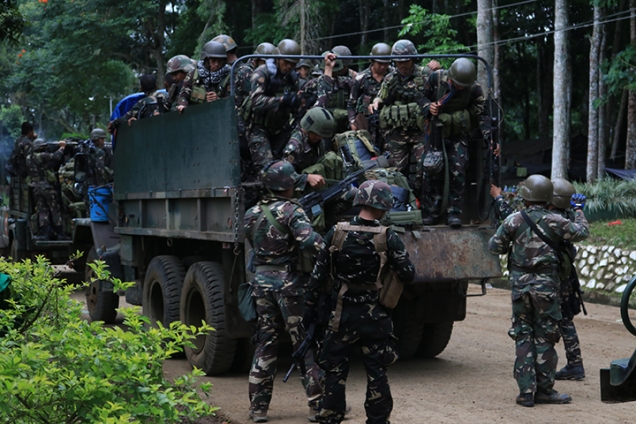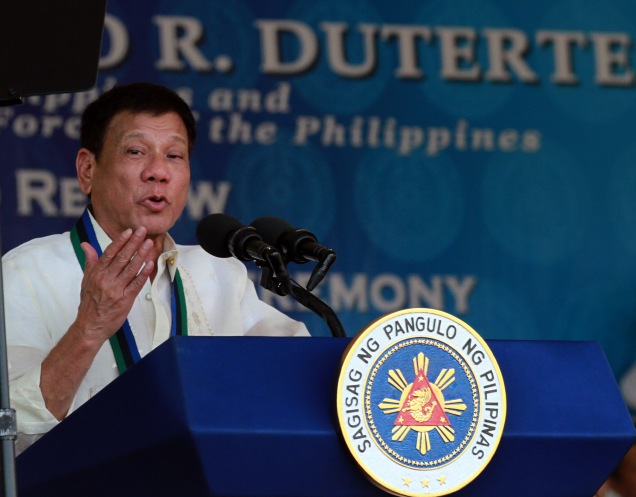
On 30 March, separatist rebels opened fire on three employees of the Grasberg gold and copper mine near Puncak Jaya – the highest mountain in Indonesia’s remote easternmost province of Papua. One worker was killed and another two sustained gunshot wounds in the attack, which targeted an office and housing area of US-based firm Freeport-McMoRan. The company jointly owns the site – which is the largest gold mine and second largest copper mine in the world – with the Indonesian government.
The mine sits at the heart of a volatile region. The Papua region, which encompasses the provinces of both Papua and West Papua, has been the site of a low-level separatist insurgency since the 1960s. Seven years after the end of Dutch colonial rule, the region was incorporated into Indonesia in 1969 via a disputed referendum, in which only 1,025 Papuans, carefully chosen by the Indonesian military, were permitted to cast a ballot. The poll remains a source of tension and drives separatism to this day.
While the conflict has persisted at a low level for decades, last year – the 50th anniversary of the vote – witnessed an uptick in violence. Protestors took to the streets across the two provinces last August, angered by an incident in Surabaya in which Papuan university students were arrested by police and suffered racial taunts from nationalists, over accusations they had desecrated an Indonesian flag. The ensuing street demonstrations soon turned violent, with deaths and injuries reported on both sides.
The recent shooting incident near Puncak Jaya was preceded by a series of clashes in the area between rebels and the Indonesian military, which prompted 917 residents to flee to the nearby city of Timika. Violence appears to be rising while the political campaign for Papuan independence stalls, leaving the status-quo intact and the future no-clearer for the region’s residents, who have long endured poverty and underdevelopment. As the stalemate persists, what makes the situation in Papua so intractable?
The roots of the independence movement
The origins of the dispute date to the mid-20th Century, when the area was under Dutch colonial rule. Indonesia gained Independence in 1949, yet the Dutch retained control of Papua through the 1950s. As calls for independence grew, Papuan leaders held a Congress in 1961 and raised their own flag, the Morning Star. Violence erupted between Papuans, Indonesians and Dutch forces until a UN-sponsored treaty – the New York Agreement – was brokered in 1962. The agreement facilitated initial Indonesian control with the promise of a future referendum to decide the final status of the disputed territory.
The ballot, labelled the ‘Act of Free Choice’, was held in 1969. The Indonesian authorities selected just 1,025 Papuan representatives to vote, by raising of the hand, on behalf of the entire population of the region, which at the time had almost a million inhabitants. Voters unanimously backed staying under the rule of Jakarta; yet did so within an atmosphere of intimidation and under the threat of violence. The result was controversially ratified by the UN, which voted by a majority 84-0, with 30 abstentions.

Angered by the perceived unfairness of the process, breakaway elements in the Papua region resorted to violence. An armed guerrilla group, the Free Papua Movement or Organisasi Papua Merdeka (OPM) has carried-out attacks targeting security forces and multinational corporations since the 1970s. Other insurgent groups, such as the West Papua National Liberation Army or Tentera Pembebasan Nasional Papua Barat (TPNPB) also operate in the region. The latter group claimed responsibility for the attack in late-March on workers of the Grasberg mine, which it views as diverting profits abroad and harming the environment. The Indonesian military has also been accused of rights abuses and arbitrary arrests.
While the insurgency has persisted away from the scrutiny of the international media spotlight, 2019 marked a turning point in coverage. The protests which started last August, spread to cities including Timika, Fakfak, Sarong and regional capital Manokwari. Mobile phone footage was shared around the world on social media platforms and made it into mainstream news in the West. Indonesia promptly cut internet access to the region, claiming it would ‘accelerate the process of restoring security’. Yet Papuan independence activists and human rights organizations suspected the move was designed to limit global media coverage, cover-up abuses and prevent protestors from co-ordinating their actions.
Why is the Papuan situation so intractable?
The conflict is resistant to resolution given the diametrically opposed positions of both sides. From the perspective of Jakarta, the region came under its control in the 1960s via a legitimate vote, backed by the UN and supported by its neighbours and allies. Even today, regional powers such as Australia are reluctant to sympathize with Papuan separatists or criticize Indonesian military actions in the region. Indonesian politicians and military leaders are keen to defend the country’s sovereignty and territorial integrity in its outermost regions; while as a resource-rich area, Papua is vital to the national economy.
Papuan independence activists, such as exiled figurehead of the movement, Benny Wenda, present a different reality. They view the 1969 vote as flawed and unrepresentative of the native population of Papua. Indonesian rule is seen as being illegitimate and constituting a form of modern-day colonialism. A set of additional grievances have added to the Papuan narrative of unjust domination by Jakarta. Of particular concern to independence activists is transmigration; a policy which has seen mostly-Muslim Javanese settle in Papua, displacing elements of the culture of mostly-Christian Melanesian Papuans.

Economic grievances also feature highly on the list of concerns. Under Indonesian control, large multi-national companies have won contracts to extract Papua’s natural resources, diverting profits out of the region while much of the local population lives in poverty. Infrastructure also lags behind, leaving Papua underdeveloped and disconnected from more affluent sections of the Indonesian archipelago. Such companies also bring negative environmental impacts, such as pollution and the loss of forests. Many Papuans feel marginalized by the Jakarta elite and discriminated against by other ethnic groups.
An insurgency governed by stalemate
Indonesia shows little sign of budging from its long-term position on Papua, despite current President Joko Widodo pledging to listen to the concerns of Papuans after last year’s violent demonstrations. The Papuan independence movement – led primarily by Papuans exiled abroad – has made minimal progress amid internal divisions and a lack of coherence, despite the recent boost in global attention.
The UN – which ratified Indonesian control in the 1960s – is just as unlikely today to provide support for those intent on securing independence via political means. The principles of state sovereignty and territorial integrity remain the two cornerstones of international diplomacy, while regional allies with similar concerns about breakaway regions and separatist struggles at home are certain to back Jakarta. For major powers such as the US, China and Russia, Papua is of little wider geo-strategic significance.
It is hard to see how Papua will escape the current impasse. A cycle of insurgent attacks, alleged state oppression, protests and military deployments continue to dictate the region’s security architecture. Papuan separatist groups are no match for the strength of the Indonesian military; while in times of increased tension the authorities are able to suppress information, denting the organizational ability of rebels and their supporters. For as long as there is no meaningful political dialogue, the status-quo in Papua – of a conflict frozen in time and largely hidden from view – will prevail long into the future.
A version of this article is also published on Geopolitical Monitor.























